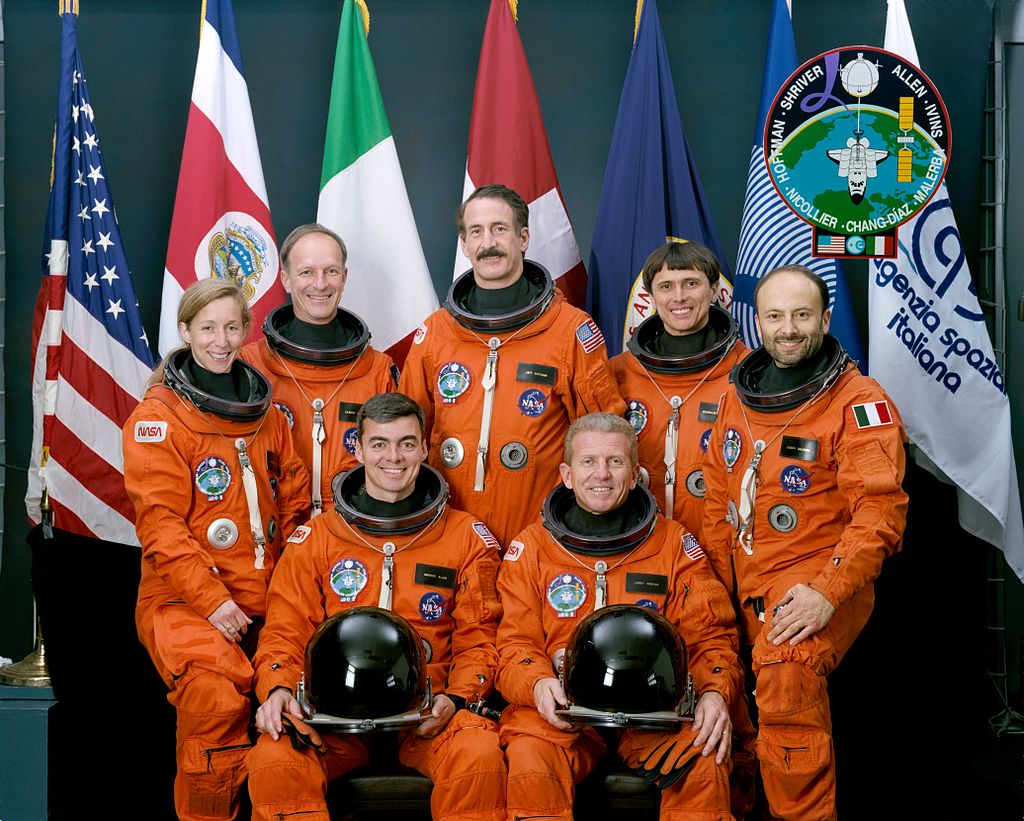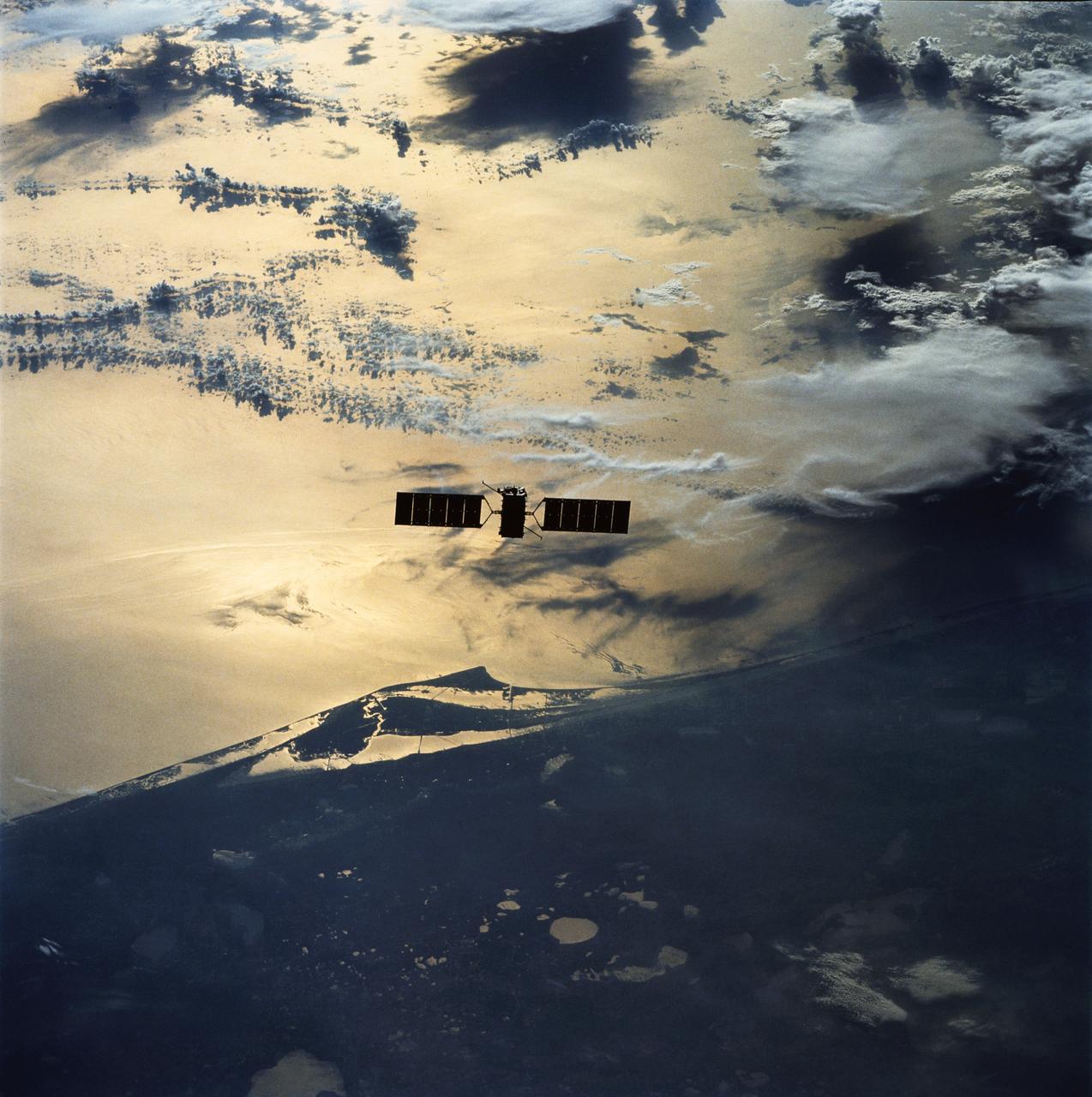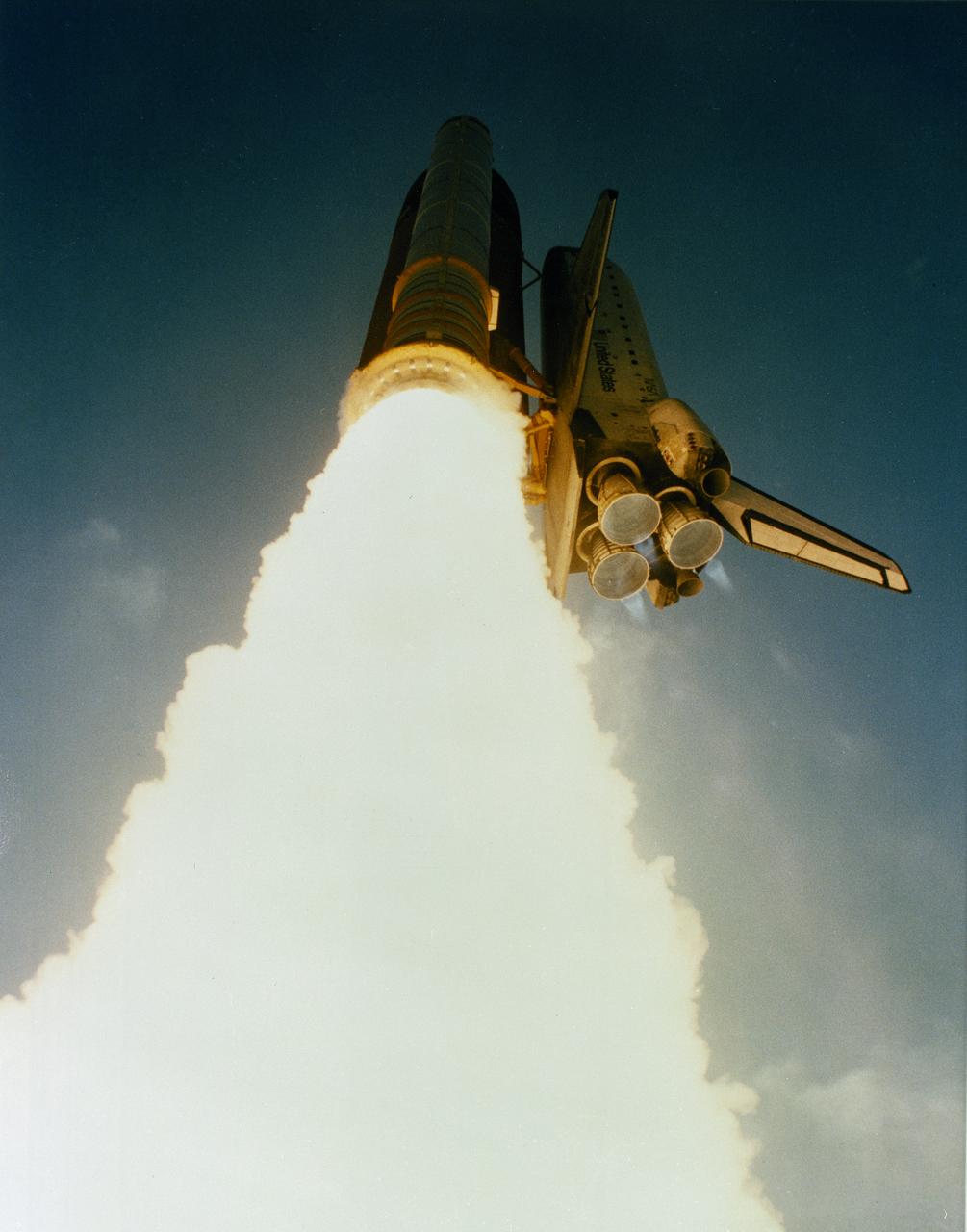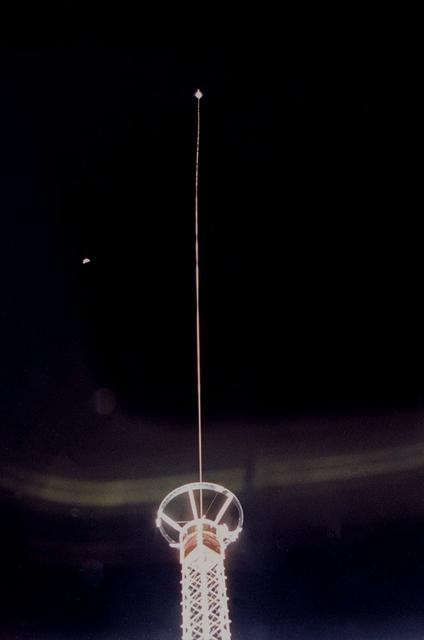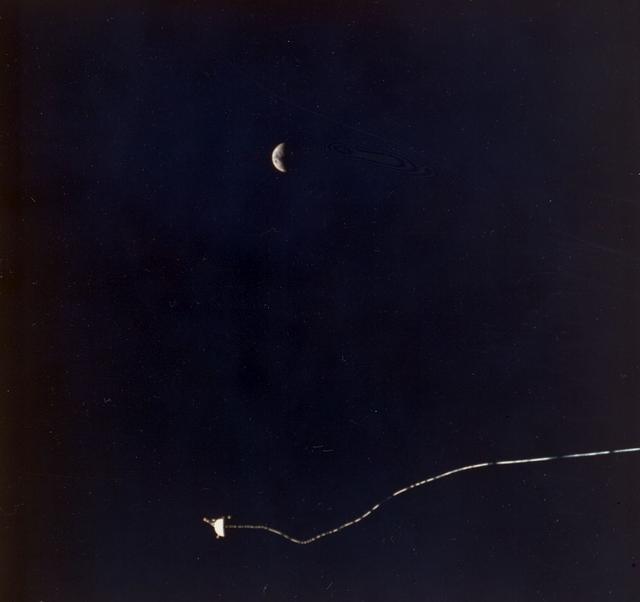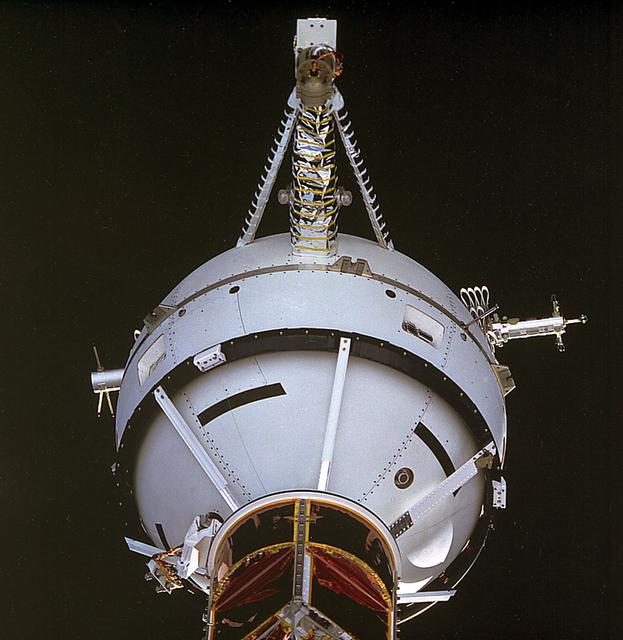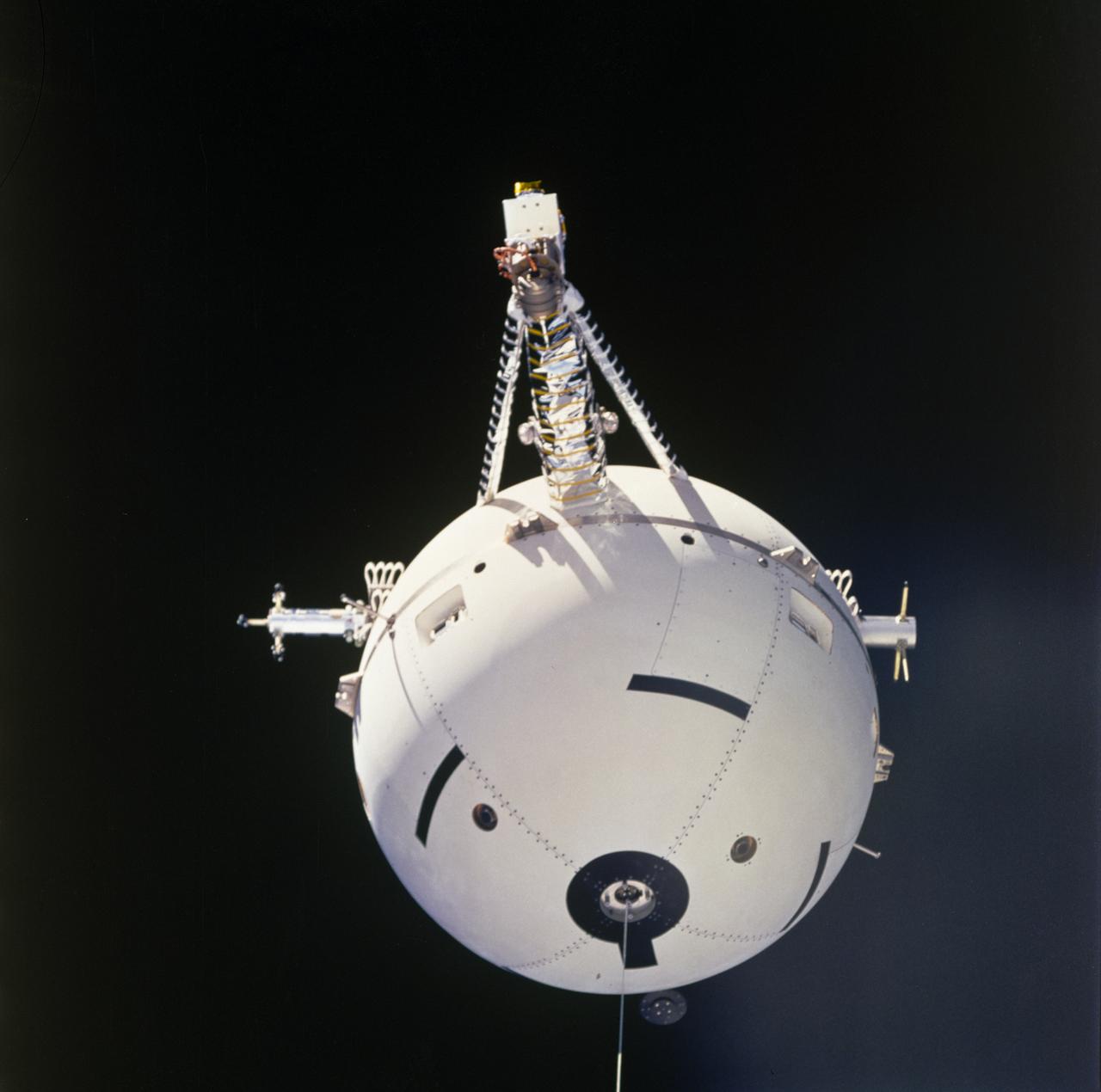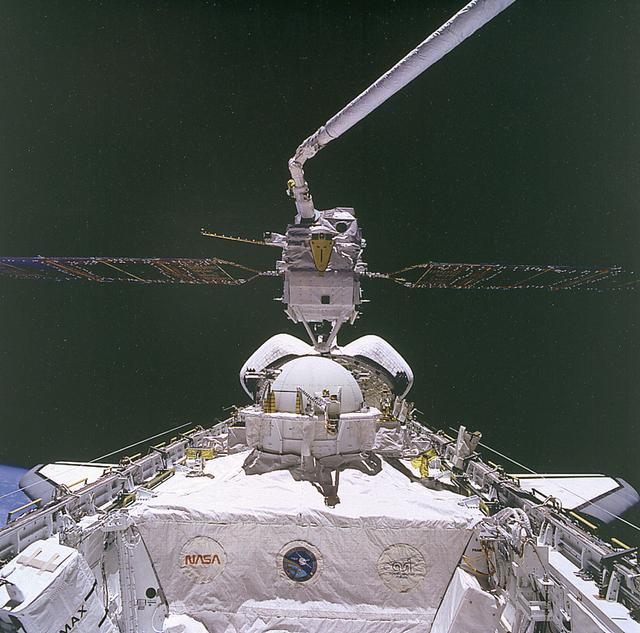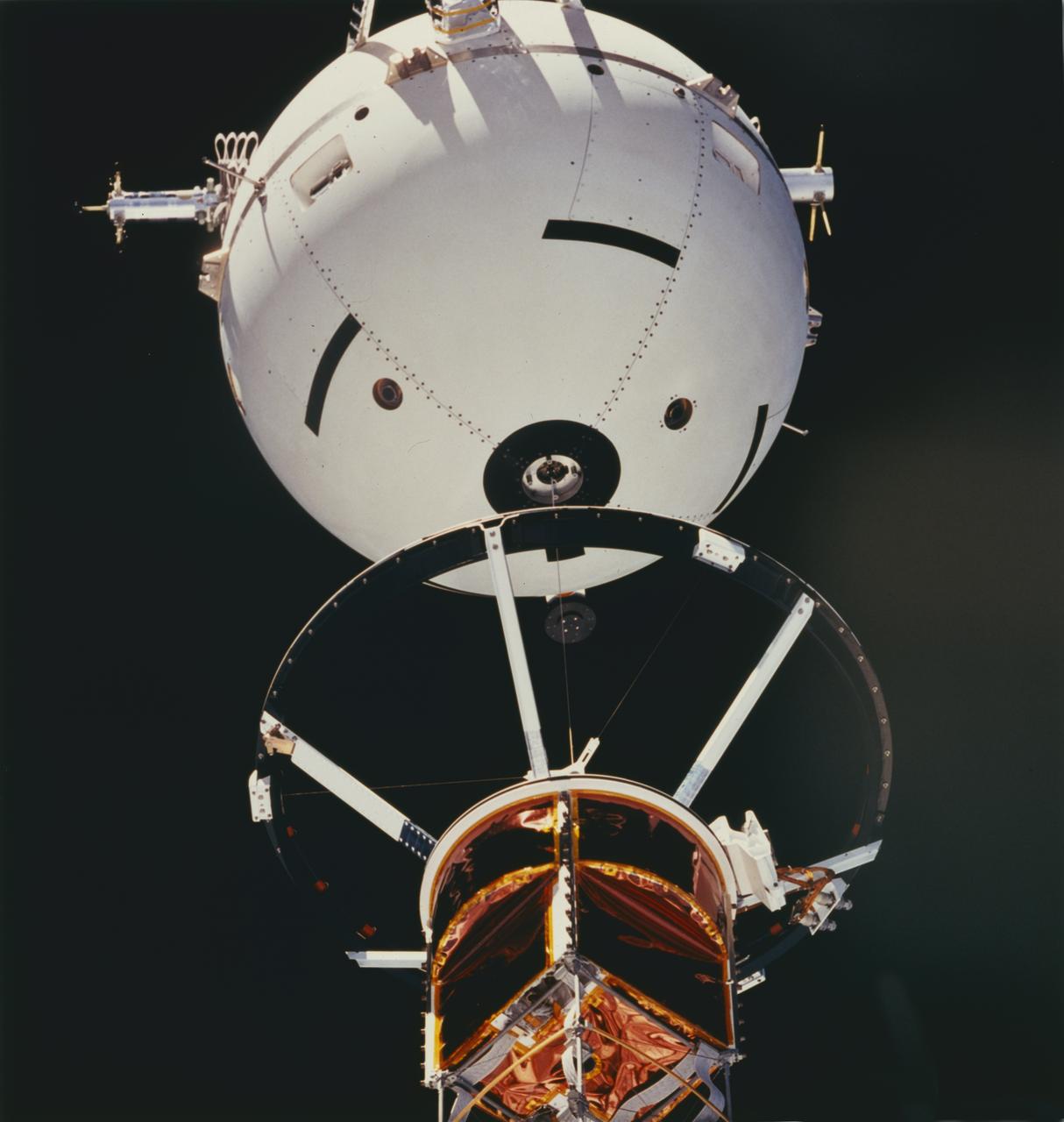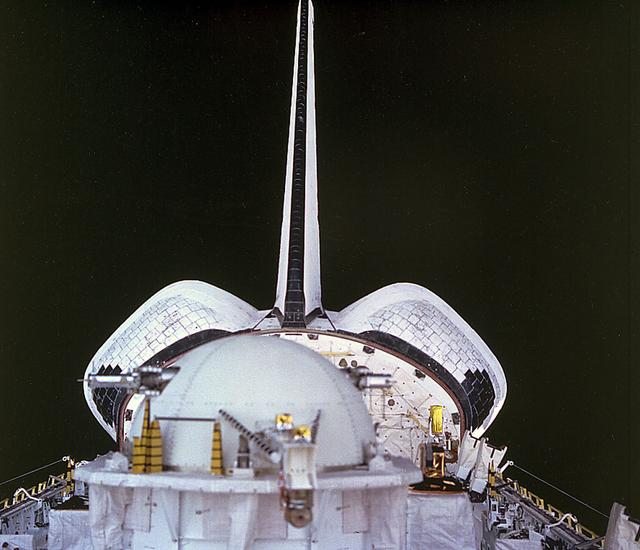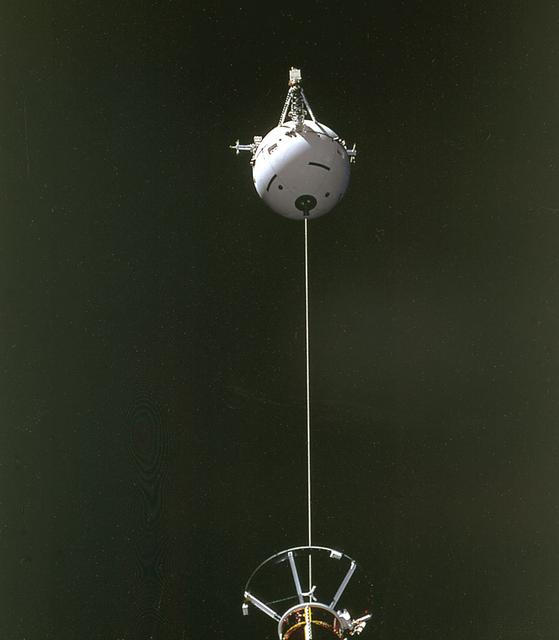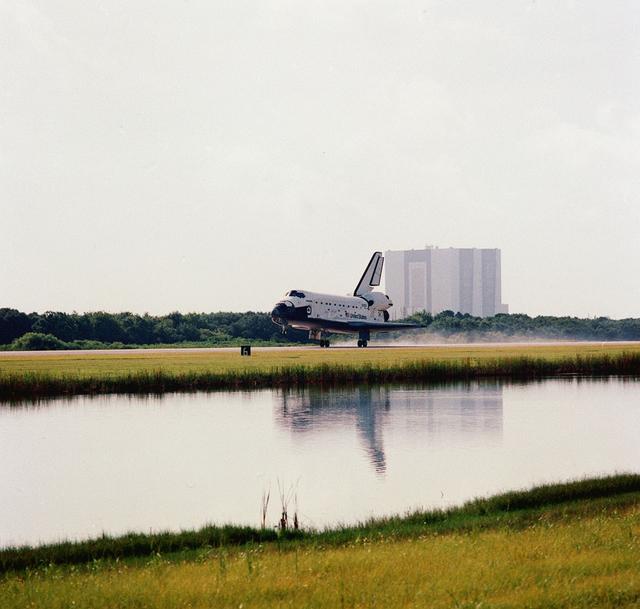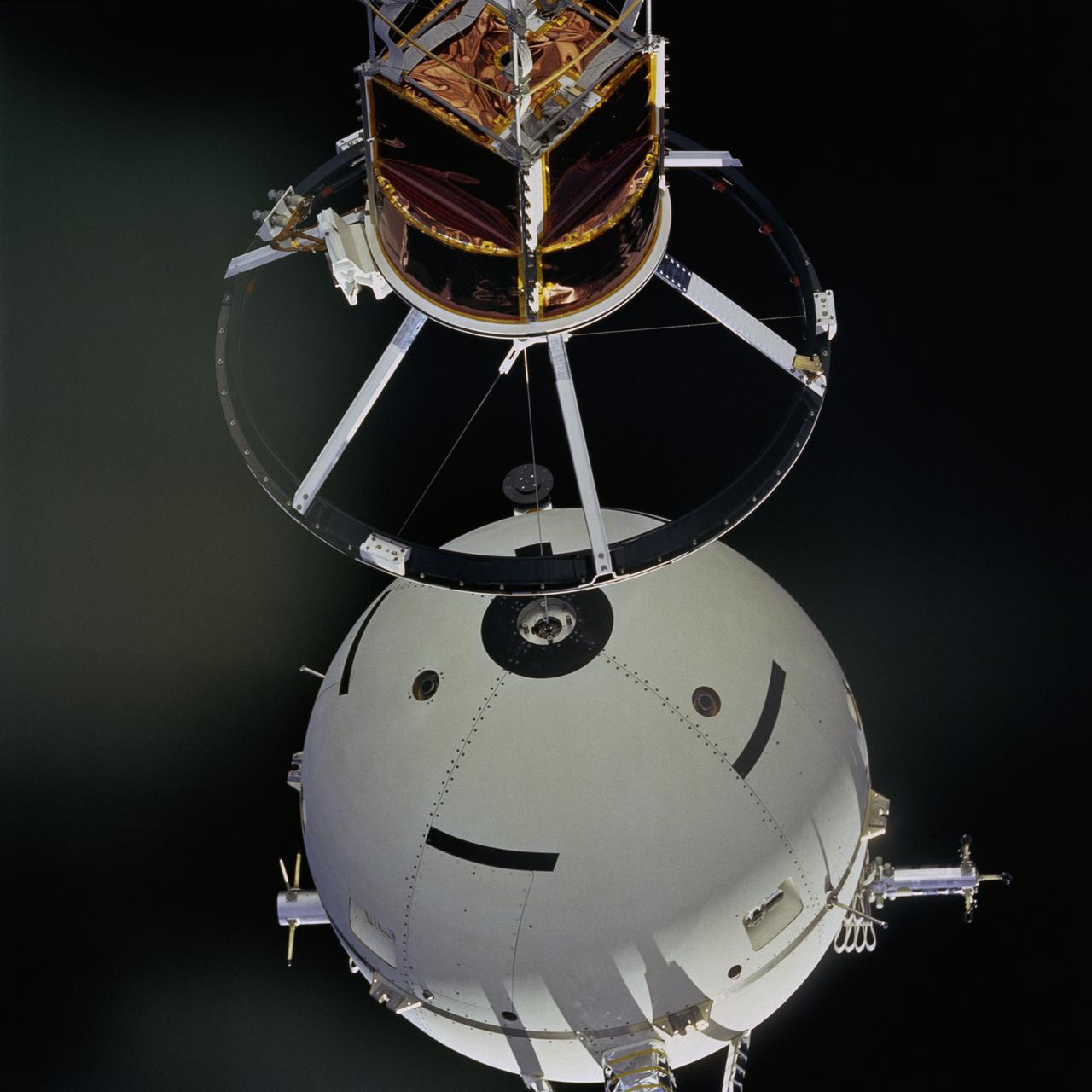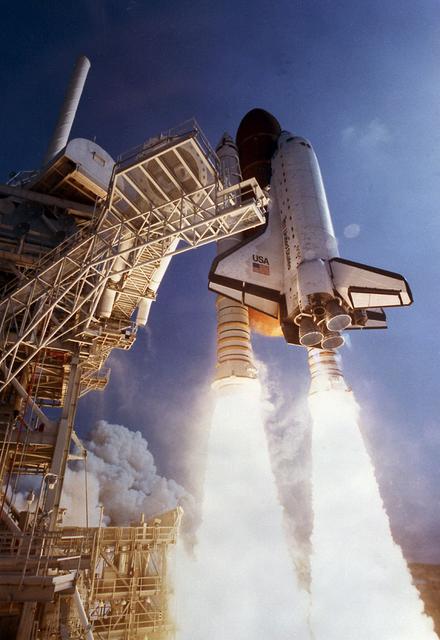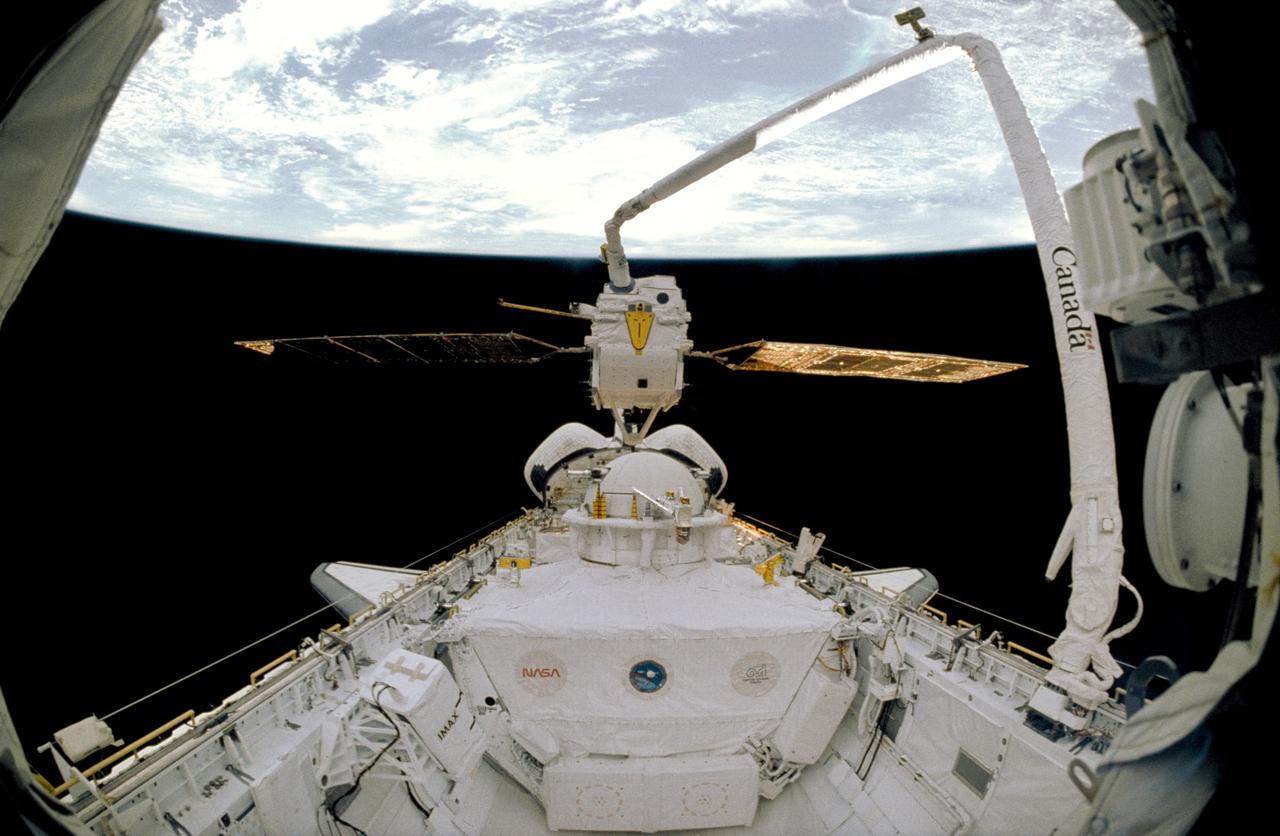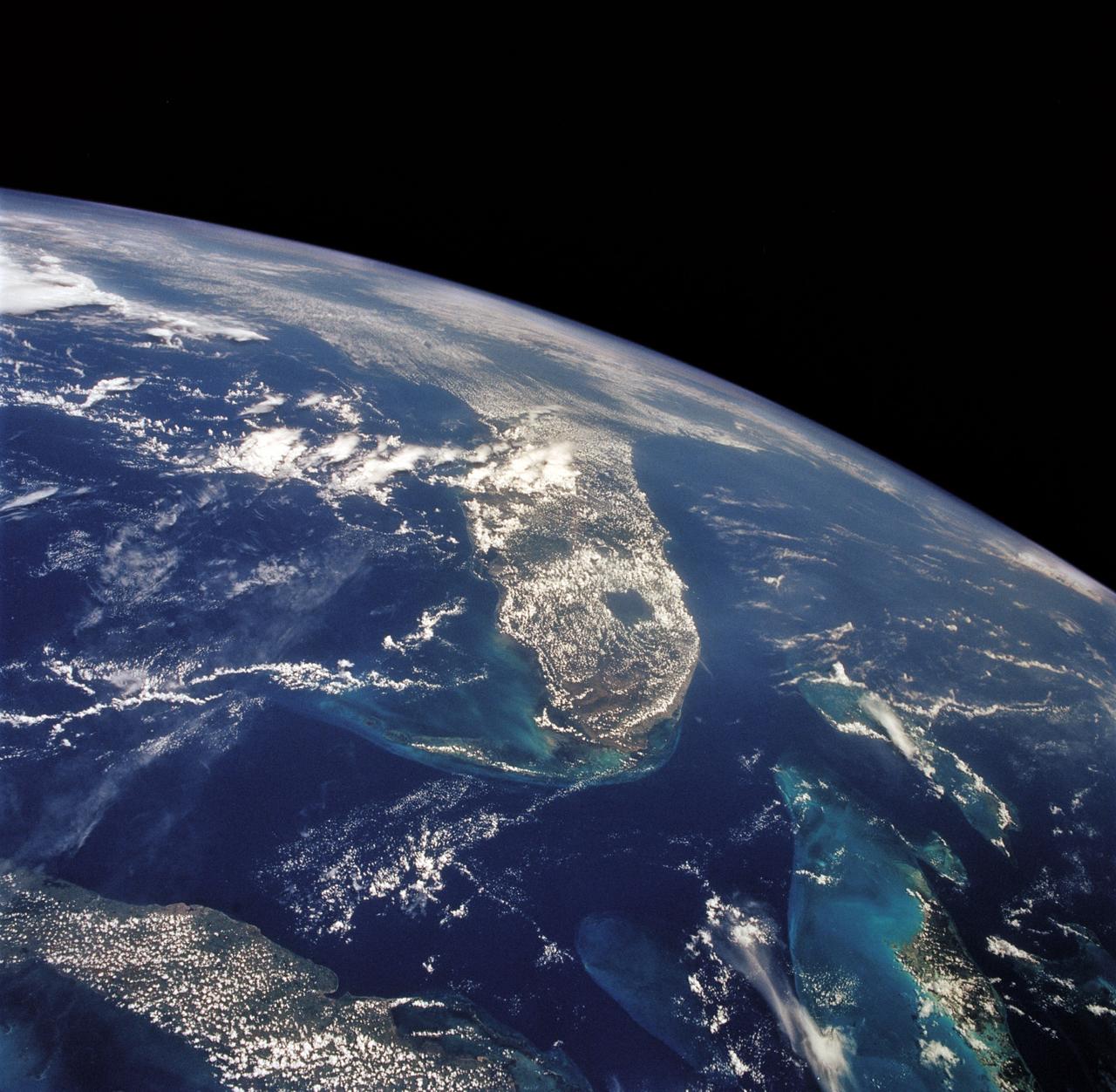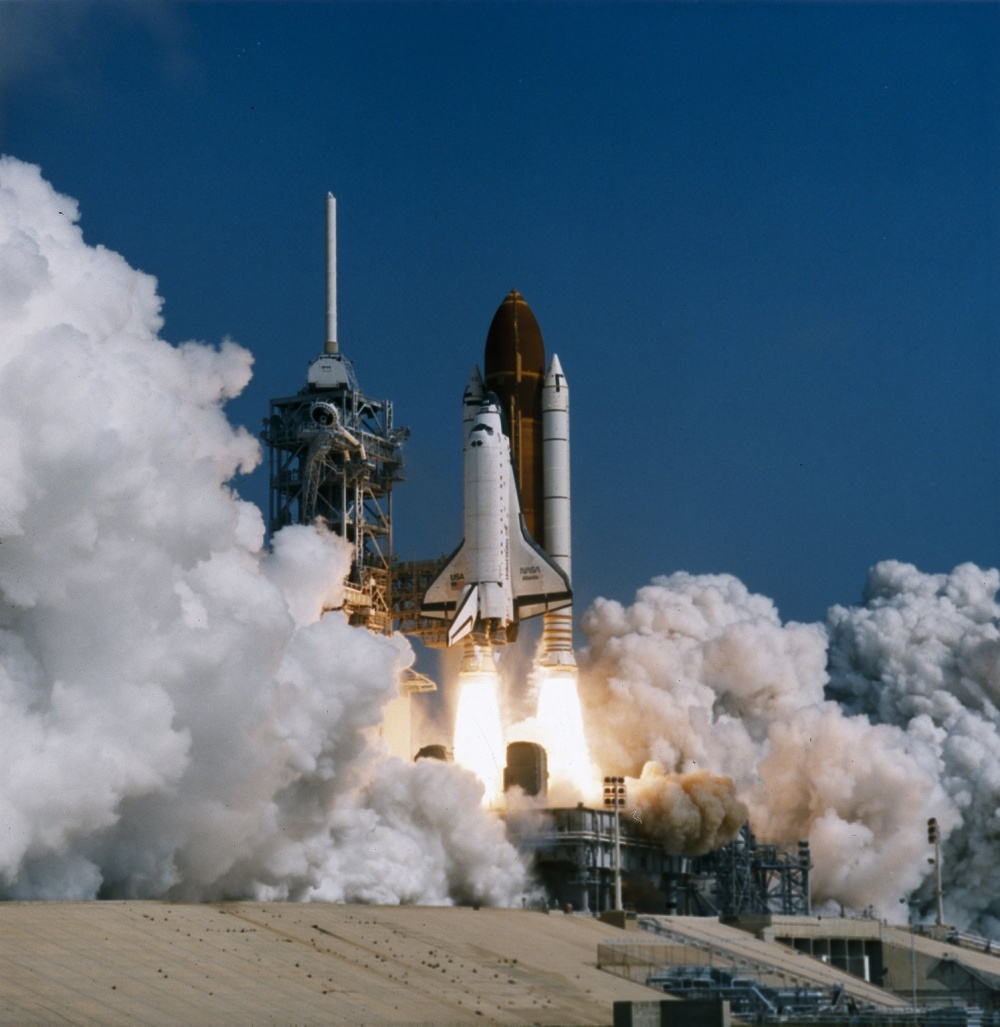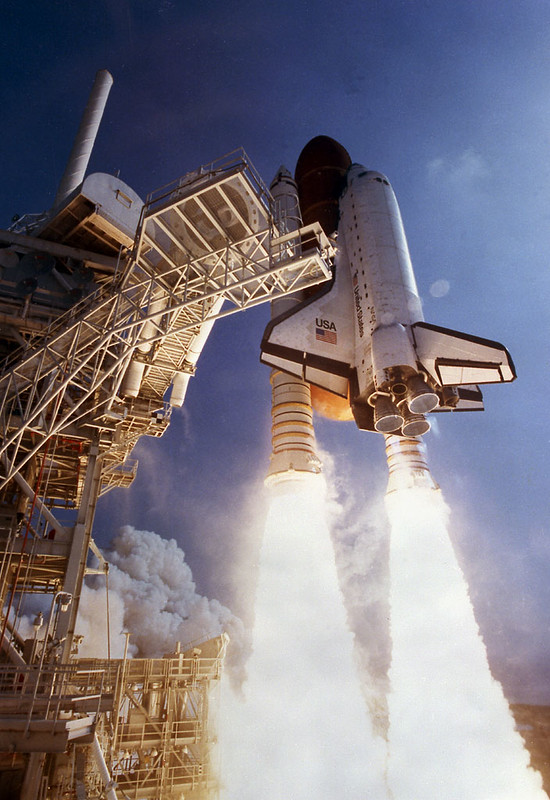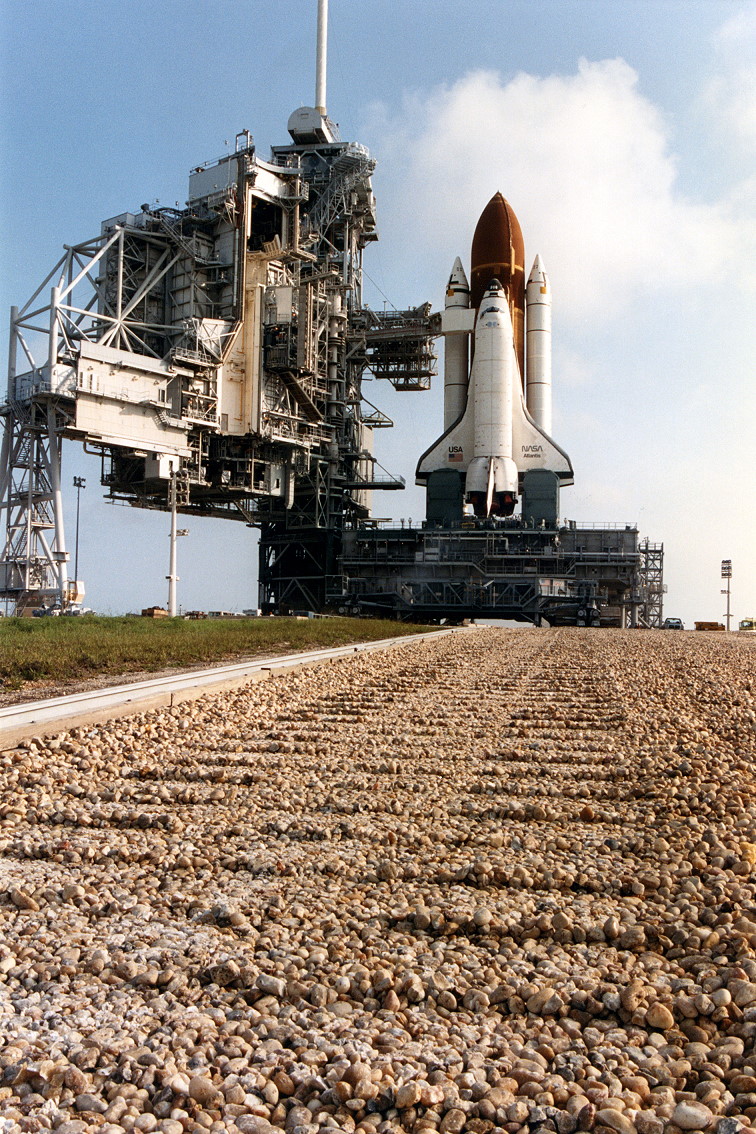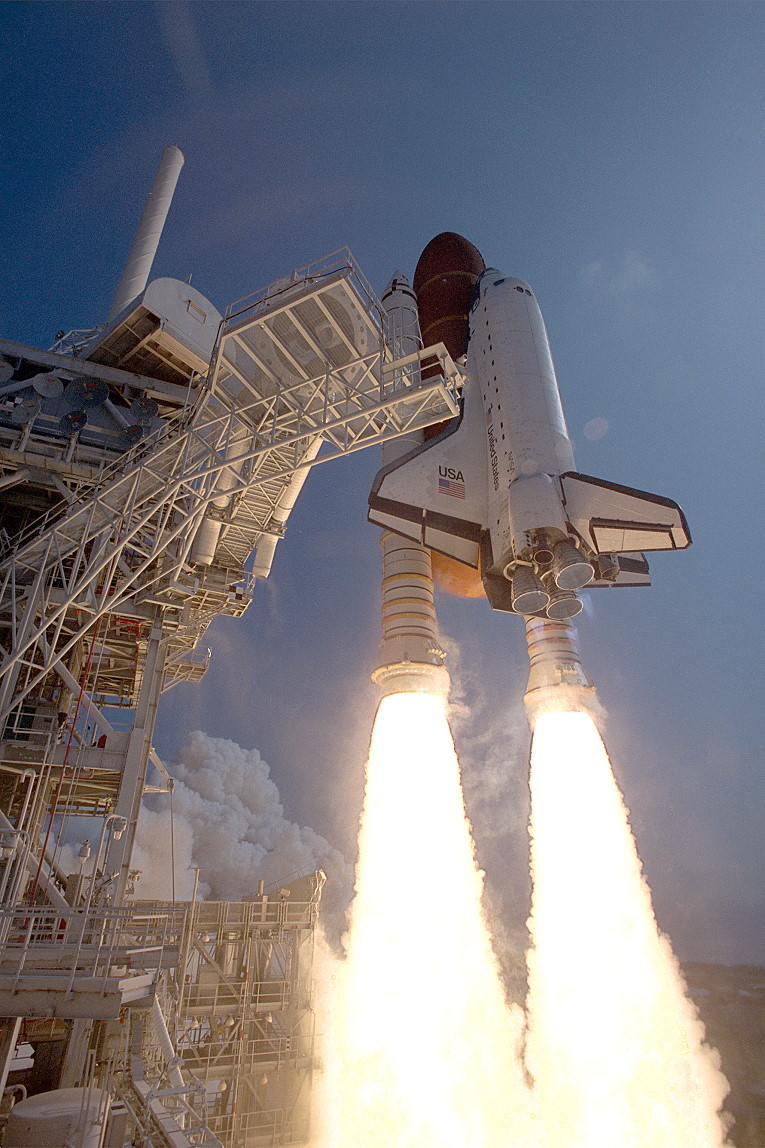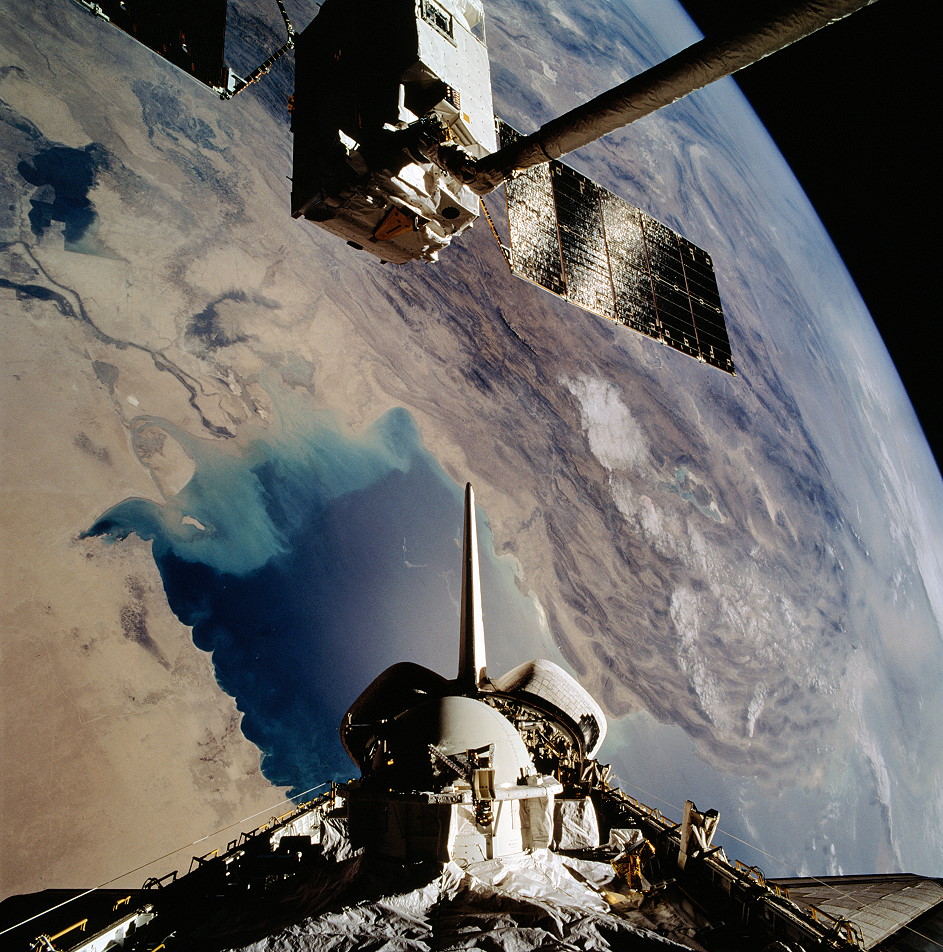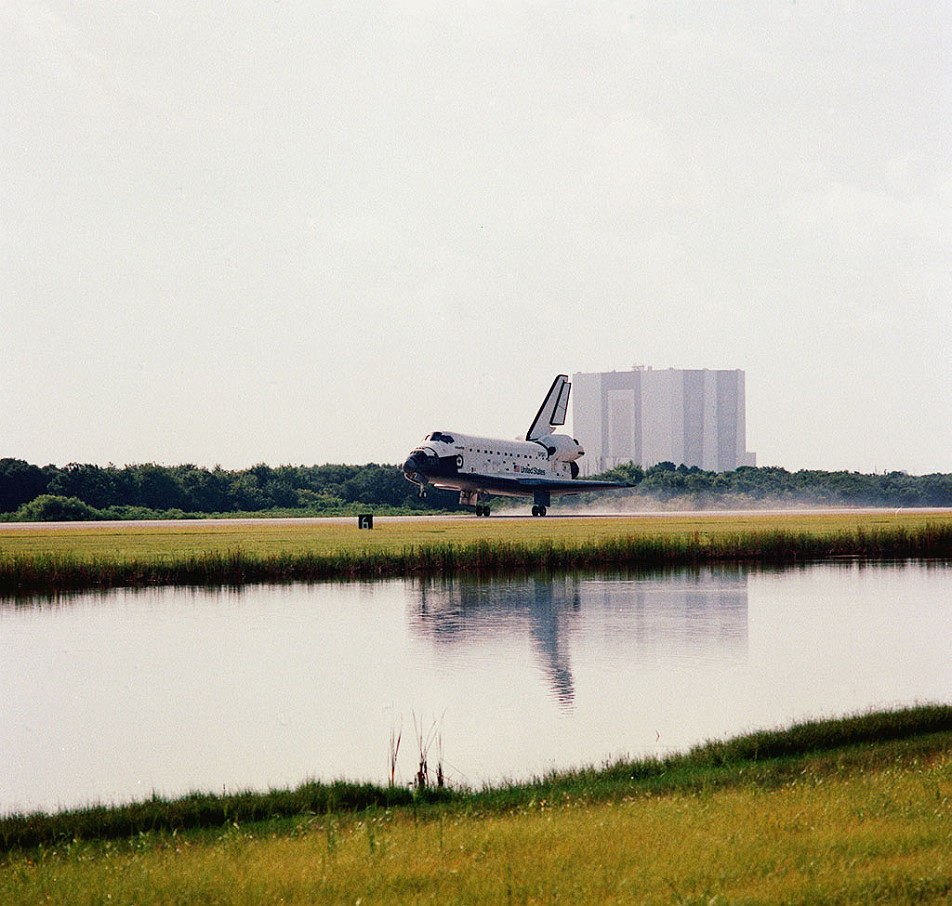STS-46 Fact Sheet
By Cliff Lethbridge

STS-46 — Atlantis
49th Space Shuttle Mission
12th Flight of Atlantis
Crew:
Loren J. Shriver, Commander
Andrew M. Allen, Pilot
Jeffrey A. Hoffman, Payload Commander
Franklin R. Chang-Diaz, Mission Specialist
Marsha S. Ivins, Mission Specialist
Claude Nicollier, Mission Specialist
Franco Malerba, Payload Specialist
Orbiter Preparations:
Tow to Orbiter Processing Facility – April 2, 1992
Rollover to Vehicle Assembly Building – June 4, 1992
Rollout to Launch Pad 39B – June 11, 1992
Launch:
July 31, 1992 – 9:56:48 a.m. EDT. Countdown was held 48 seconds at T-5 minutes to allow orbiter computers to verify that auxiliary power units were ready to start.
Landing:
August 8, 1992 – 9:11:51 a.m. EDT at Runway 33, Kennedy Space Center. Rollout distance was 10,860 feet. Rollout time was 66 seconds. Mission duration was 7 days, 23 hours, 15 minutes, 3 seconds. Landing occurred during the 127th orbit.
Mission Summary:
Primary mission objectives were the deployment of the European Space Agency’s European Retrievable Carrier (EURECA) and operation of the joint NASA/Italian Space Agency Tethered Satellite System (TSS).
EURECA, which contained a host of microgravity research experiments, was deployed to an altitude of 310 statute miles, to be retrieved during a future Shuttle mission.
TSS was to be deployed to a distance of 12.5 miles on a tether attached to a reel in the Shuttle’s cargo bay. The system was designed to generate electric current from Earth’s extreme upper atmosphere.
However, TSS was only deployed to a distance of 840 feet due to the jamming of the tether line, which also proved to be extremely difficult to control. The TSS satellite was reeled in for a return to Earth after several days of attempts to free the tether proved futile.
Secondary payloads included the Evaluation of Oxygen Integration with Materials/Thermal Management Process (EOIM-III/TEMP 2A-3), Consortium for Materials Development in Space Complex Autonomous Payloads (CONCAP II and CONCAP III), IMAX Cargo Bay Camera (ICBC), Limited Duration Space Environment Candidate Materials Exposure (LDCE), Air Force Maui Optical Site (AMOS) experiment, Pituitary Growth Hormone Cell Function (PHCF) and Ultraviolet Plume Instrument (UVPI).
SELECTED NASA PHOTOS FROM STS-46
